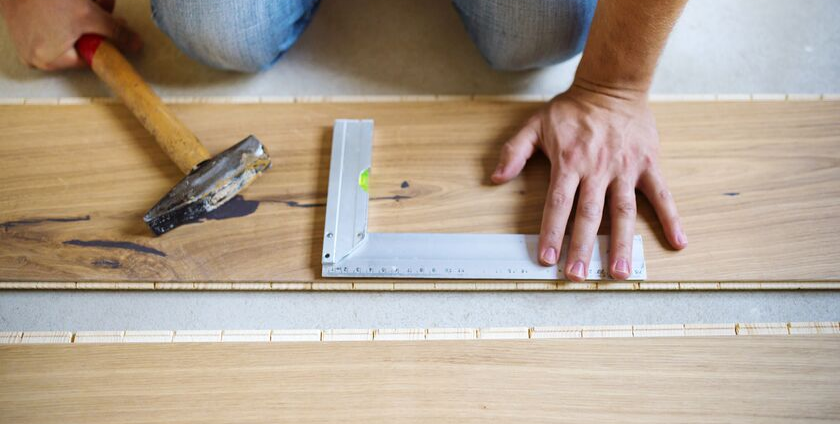Non-Toxic Flooring, the Foundation to Improving Indoor Air Quality

- Tags: air quality, allergies, asthma, CARB, EPA, formaldehyde, VOCs, ZERO-ADD
- Category: Blog
- 1 comment
October is National Indoor Air Quality Awareness Month and LIFECORE will address topics concerning air quality in your home in a three-part series.
Poor indoor air quality creates toxic spaces in our home as well as in our environment as a whole. Just ask asthma, allergy or migraine sufferers. Poor indoor air quality can compromise the lungs of the elderly, sick and children alike and, in the case of VOCs, can contribute significantly to the air quality of our environment at large.
So what does all this have to do with flooring? Well, first, let’s examine all of the components that contribute to our indoor air quality. Moisture/humidity, poor ventilation, and allergens can all create a less than desirable breathing situation in the home, which can make the most vulnerable among us sick and the rest of us feel lousy in general. However, it’s off-gassing that takes this a step further by creating noxious circumstances that can adversely affect your environment as well as our health.
What the VOC? The Issue with Off-gassing
Off gassing happens when volatile organic compounds (chemical particles also referred to as VOCs), are released into the air that you breathe through furniture, cabinetry, drapes, mattresses, countertops, paint, electronic devices, etc. However, it’s the sheer square footage of flooring that can make it one of the major contributors to off-gassing in the home – in part because of the glues, sealers, finishes, plastics, grout, etc. found in carpeting, laminate, vinyl, ceramic tile, and hardwood.

One of the most common VOCs you can find in your home environment is formaldehyde. Formaldehyde occurs in non-toxic levels naturally in virtually everything around us, including our own bodies. However, when formaldehyde levels are compounded by chemical additives, even an organic product like hardwood, flooring can produce higher levels of VOCs.
How VOCs Impact the Toxicity of Flooring
In addition to the various concerns to our personal well being that go along with off-gassing (which we will cover in part two of this series), many consumers are not aware of the role that off-gassing can play in the ecosystem. With concerns for the environment, inspiring many people to examine their own carbon footprint, there are a few facts to consider when choosing a floor.
VOC emissions contribute to the formation of ground-level ozone (not the same as the ozone which protects the earth from the sun’s strong rays.) Ground-level ozone creates smog and poor air quality and can negatively impact our crops, water, nutrient cycles, and agriculture to name a few.
Wow, that seems a lot of responsibility when picking out design options for your home. But every choice can start the transformation to a healthier home, environment and you.
The Solution: LIFECORE’s Low-VOC, Non-Toxic Flooring
LIFECORE’s innovative, ZERO-ADD® technology allows us to produce non-toxic flooring that has ZERO formaldehyde added during the manufacturing process. As a result, our floors have among the lowest levels of formaldehyde on the market without affecting the performance or durability of our product. Our flooring that has VOC safety levels well below even the strictest CARB (California Air Resource Board) and EPA (Environmental Protection Agency) regulations, as seen in the numbers below:
- Carb 2 Acceptable Level: 0.05
- EPA Acceptable Level: 0.04 – 0.05
- LIFECORE® Flooring Products level: 0.005 – 0.015 (range based on the natural level of formaldehyde in the wood)
In part two of this series, we will delve more into the common VOCs you can find in your household from all sources and what you can do to improve your air quality. We will also tell you more about what measures LIFECORE floors has taken to ensure that you and your family breathe easier.
One Response to “Non-Toxic Flooring, the Foundation to Improving Indoor Air Quality”
Leave a Reply

I was wondering were I can buy lifecore I have bad allergies and was wanting to know if it can be installed on a cement slab floor?